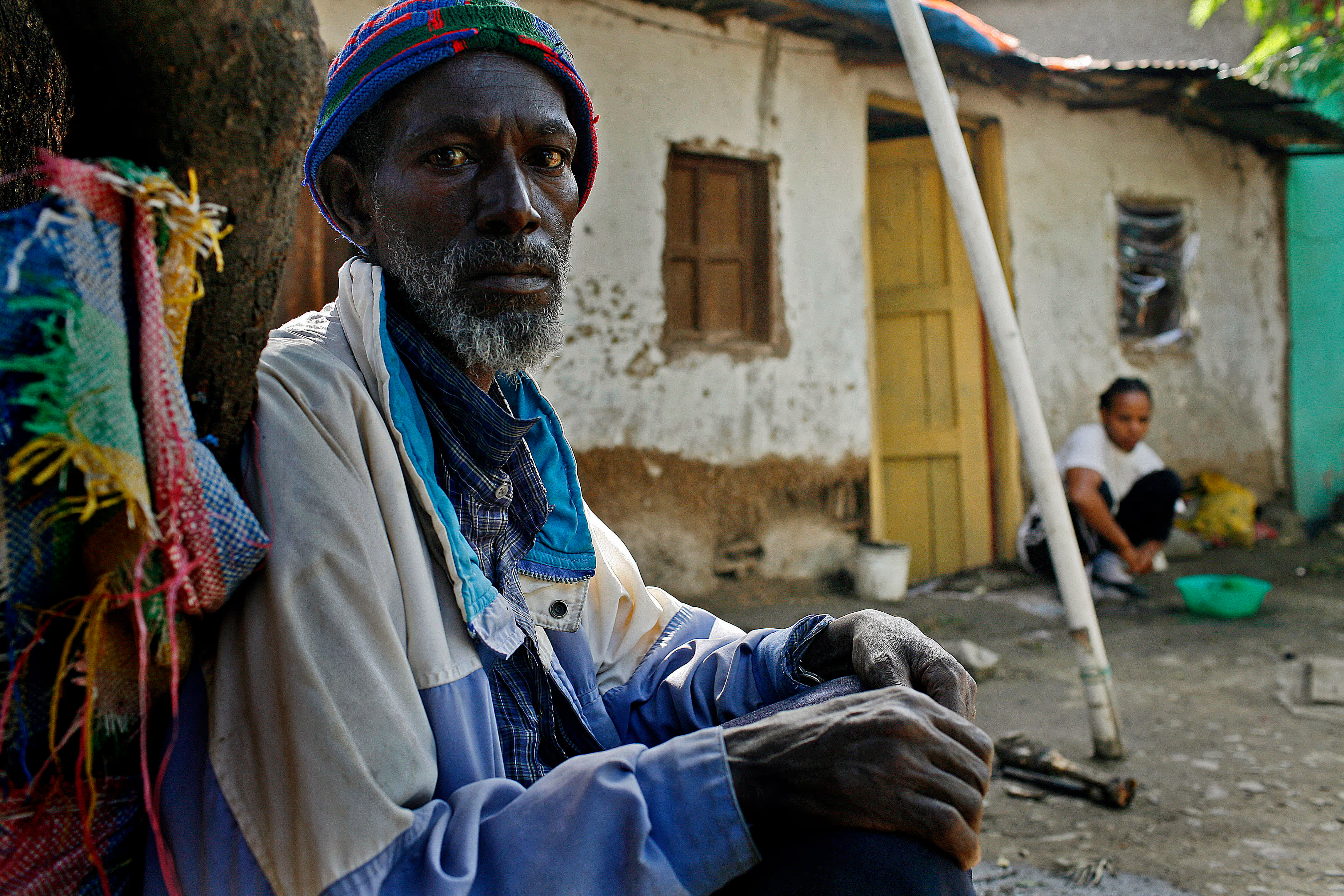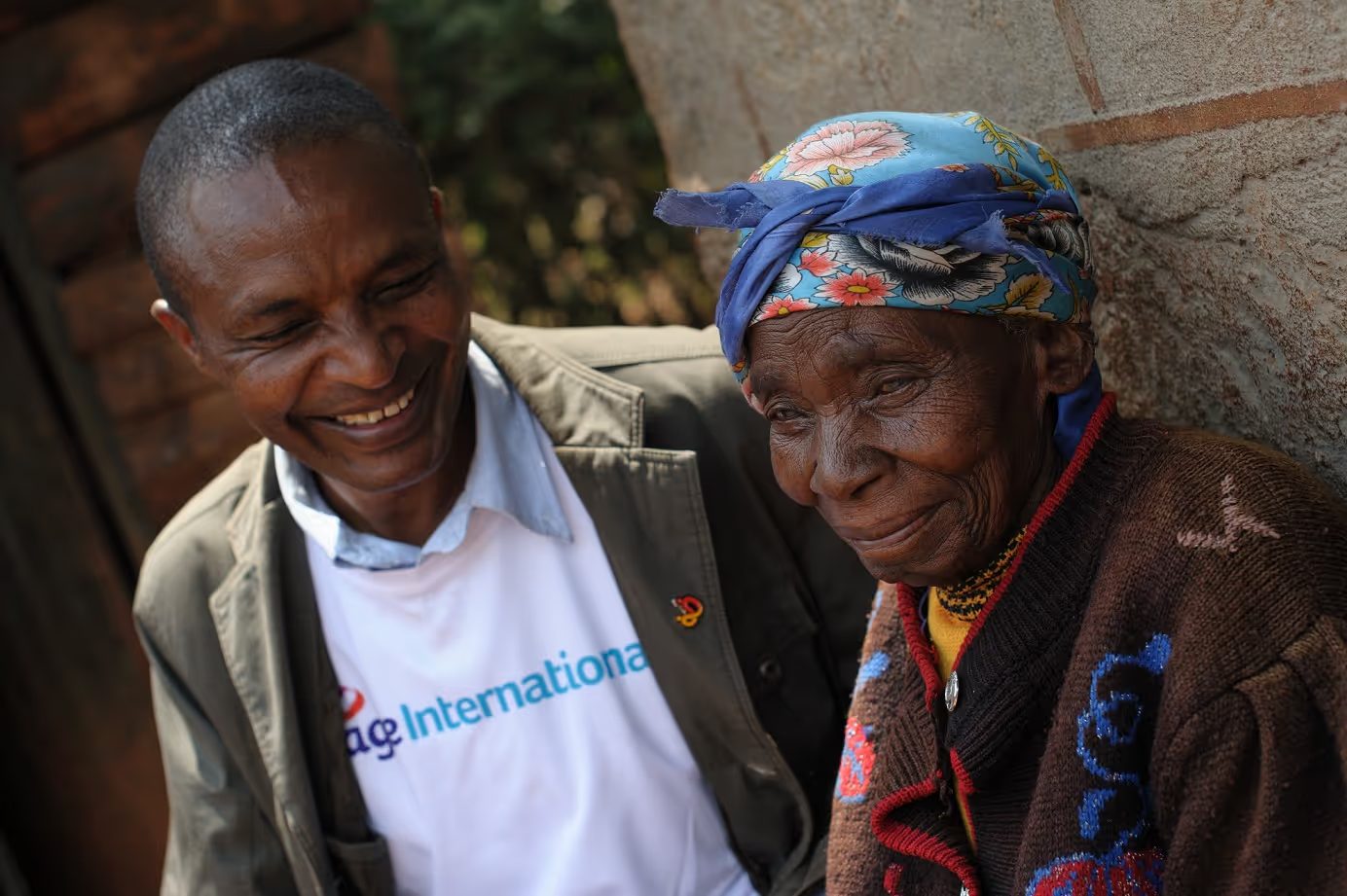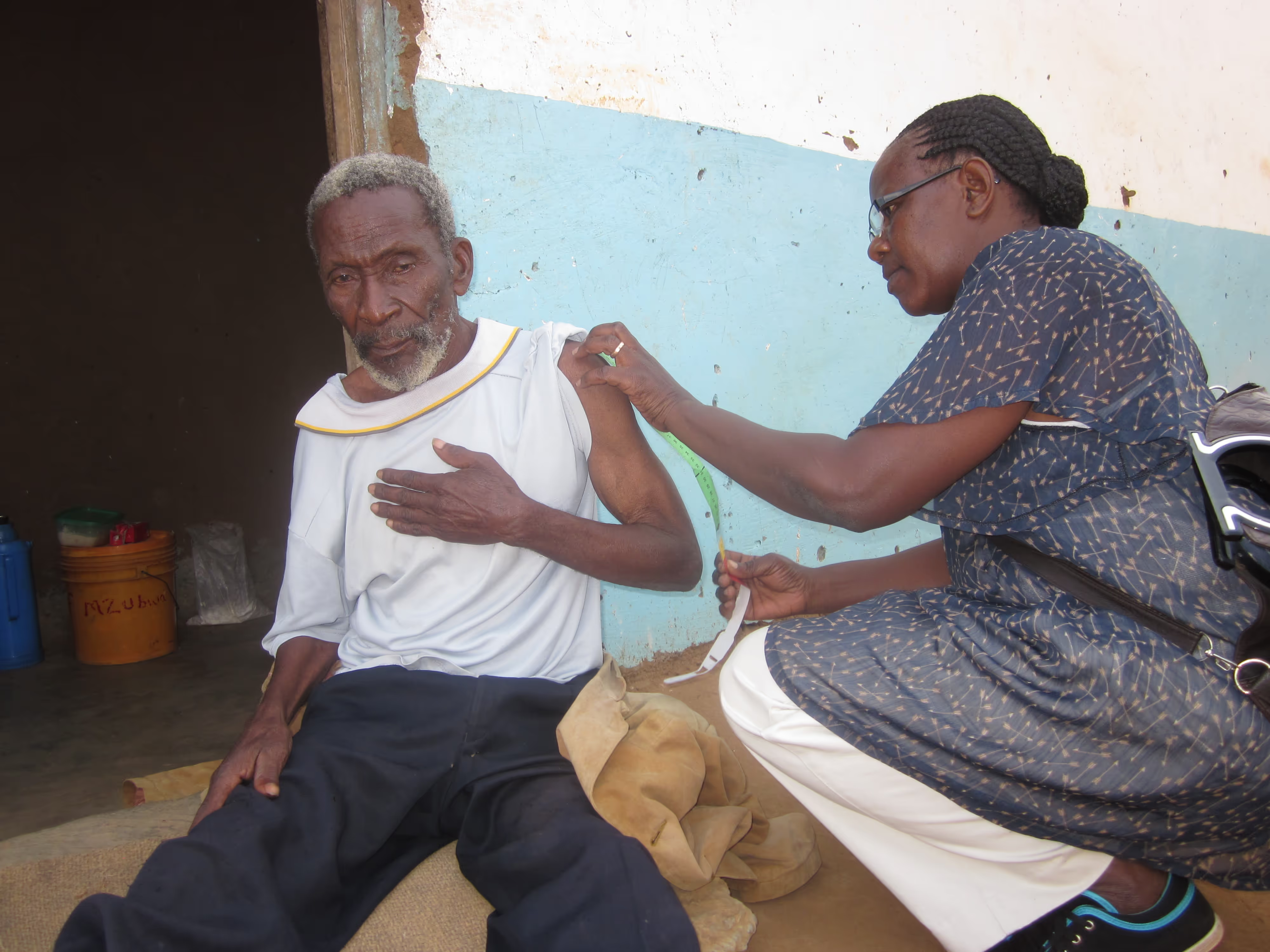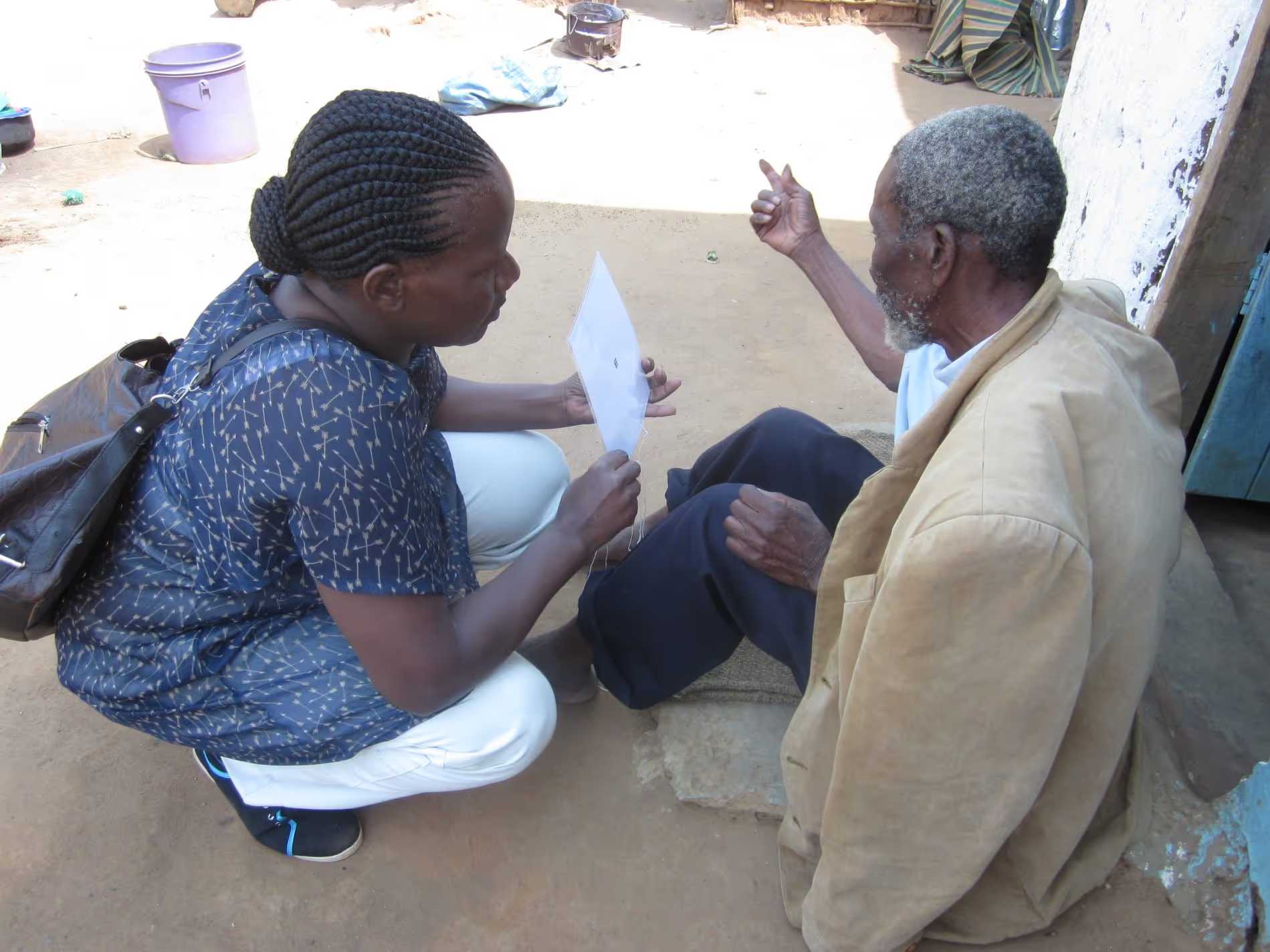Including Older People in Needs Assessments

Could you give us a quick overview of the project?
A lot of data is collected in the humanitarian space but specific information about older people is still very limited. We needed a methodology for data collection that would be accurate, cheap, replicable and easy to use compared with other methods.

The Rapid Assessment Model for Older People (RAM-OP) by HelpAge has been running for 3.5 years as a partnership between ourselves, Valid International and Brixton Health. It has been a successful partnership! Together, we designed a rapid assessment method for measuring the nutritional status and other needs that affects older people in humanitarian situations. It includes a questionnaire, a sampling method, and software for data analysis that operate without access to internet. The RAM-OP manual has been finalized and tested in the field. It will allow humanitarian workers to gather evidence on the health, nutrition and other vulnerability of older people in emergencies to design response plan on evidence based information. For me information please visit www.helpage.org/ramop
You said your partnership had been very successful, could you tell us a bit more about how it worked and why is was a success?
Valid International (an NGO that provides expert technical support for global health and nutrition programmes) and Brixton Health (a public health and epidemiology consultancy) have frequently worked together in the past, but this was the first time we have worked with them.
In terms of how the partnership worked, both Valid and Brixton were heavily involved in developing the sampling methodology, with Valid making the connection between the methodology and the software required for analysis, and Brixton mainly focused on writing language for the software. Our focus was chiefly on developing the survey itself.
It has been a good partnership - and we’re still working together today - because we had good communication; joint planning; good personal relationships; and always ensured partner engagement and sharing information to ensure the process was transparent every step of the way. It’s the greatest partnership I’ve seen.

You mentioned that the RAM-OP methodology was significantly cheaper than the SMART methodology, due to the smaller sample size. Could you explain this a bit more?
RAM-OP requires a sample size of 192, a 1-2 week assessment period (5 day training, 6 day assessment), and smaller team compared with SMART. RAM-OP uses a novel sampling method, which involves taking a sample of communities (eg villages or city-blocks), then going door to door with the 94 questions, that are more targeted to older people. It is a multi-sector assessment that can be used anywhere in the world. In addition, we have developed a RAM-OP mobile application including integration of Washington Group set of disability questions and it is feasible that it could be rolled out as a remote data collection tool.
SMART requires a sample size of 300 over a 3 week assessment period, which in turn requires a larger team than for RAM-OP. The survey itself is more focussed on nutritional status (it was originally designed for children under 5 by ACF, CDC and UNICEF) many organisations received funding to test this methodology. SMART uses population proportional sampling across a survey area, that is, sampling is divided by population size. For SMART you can’t do this anywhere in the world yet but they are also testing a mobile application.
So RAM-OP saves money and is quicker yet still retrieves accurate results.
The risk factor analysis shows that, as they get older, people are more likely to be malnourished – why is this?
They are losing vitamins and minerals and we needed to know why hence the need for RAM-OP. In South Sudan for example reports highlight that malnutrition is very high in older people, and we know that levels of severe psychosocial distress are frequently higher in older people but we simply don’t have enough data to inform a thorough understanding.
The WHO cap their data at 49 years old, and statistics beyond this are very limited. Older populations are very fast growing, and you can easily have two generations over the age of 49 who are not accounted for. RAM-OP offers a much broader set of data on older people, that isn’t being collected elsewhere.

What is the balance of questions and observations in the methodologies?
Three of the main areas covered by the assessment are vision impairment, dementia screening, and MUAC (Mid-Upper Arm Circumference – a measure of malnutrition). Visual impairment and MUAC are observational, and dementia screening involves a mixed approach.
This is because, when comparing the two methods, RAM-OP and SMART, we noticed that some answers were extremely different from one survey to the other, which could be attributed to the questions being subject to personal interpretation. Therefore, we made adaptations such as, replacing the question ‘Do you have poor eyesight?’ with a test for visual impairment.
Can the sampling method used by RAM-OP be incorporated into the SMART methodology, and used for assessing other vulnerable groups?
We are looking at with academics. Costing is always very important, and the potential savings are big. No one can come up with better alternative. We are planning to discuss RAM-OP with the SMART users/creators in detail and they are interested in future cooperation.
We will continue to engage UNICEF and ICF to encourage uptake of the RAM-OP methodology as part of their humanitarian response assessment tool– we are going to support them to use it in the field. RAM-OP can be applied to other age groups and contexts, we have also engaged with UNICEF on children and pregnant women. Now we need to move the issue of malnutrition to adults and older population as the data becomes available.

What are your next steps?
We tested RAM-OP in Ethiopia and Tanzania, now we are trying to roll it out in a further 3 countries in Africa, two in the Middle East, and two in Eastern Europe, etc. Many universities are also interested.
We are also looking for further funding but even without it – RAM-OP is validated and we will be using it. We know we need to use it as much as possible. We have a manual for training, Powerpoint presentations and measurement tools. We’re also thinking about developing RAM-NCD, using the sampling methodology for collection of data on non-communicable diseases. We will also have a RAM-OP dedicated website launching soon! Until then you can learn more about RAM-OP here.
Stay updated
Sign up for our newsletter to receive regular updates on resources, news, and insights like this. Don’t miss out on important information that can help you stay informed and engaged.
Related articles
.png)


Explore Elrha
Learn more about our mission, the organisations we support, and the resources we provide to drive research and innovation in humanitarian response.